People
‘We Have More Agency Than We Realize’: Serpentine Curator Lucia Pietroiusti on How the Art World Can Tackle Climate Change
The curator of the Golden Lion-winning Lithuanian Pavilion in Venice is wedding art and environmentalism in new ways.
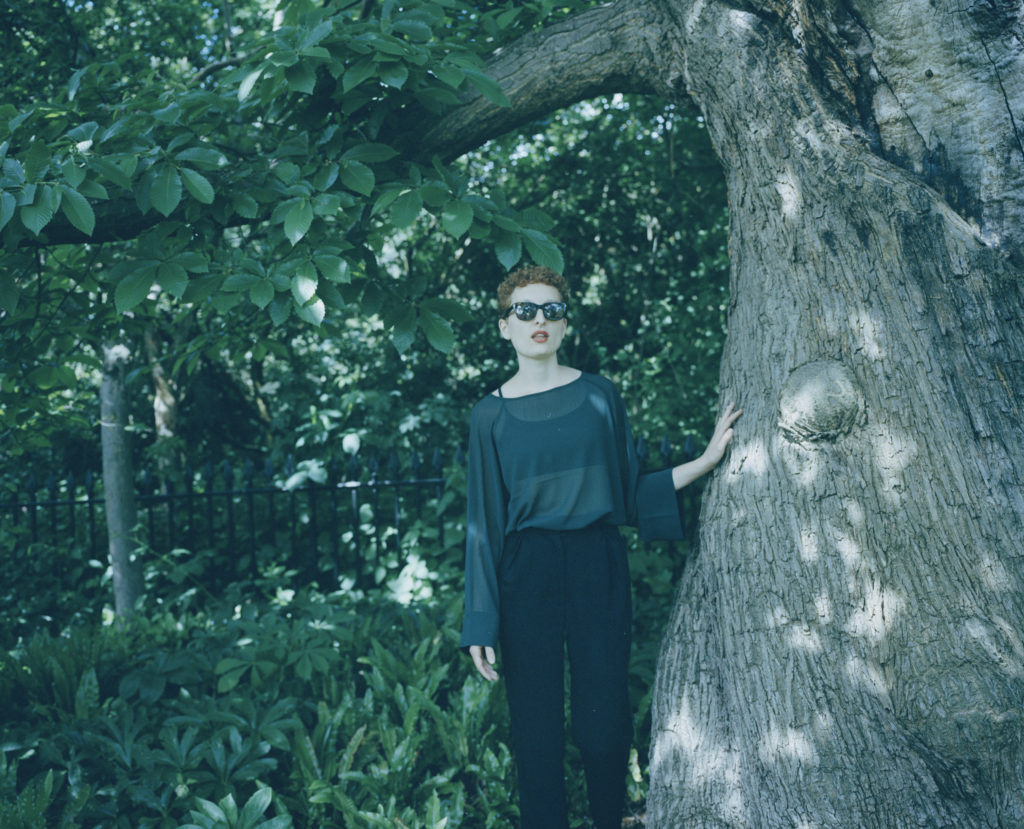
The curator of the Golden Lion-winning Lithuanian Pavilion in Venice is wedding art and environmentalism in new ways.

Kate Brown

How do you view, create, and talk about art in times of impending ecological disaster? There is no single answer to such a sweeping question, but Serpentine curator Lucia Pietroiusti is emerging as a poignant voice making the case that the so-called art world, whether it acknowledges it or not, is embedded in and accountable to the real world out there—and that means it can no longer ignore climate change.
As the founder and curator of General Ecology, a novel ongoing project at London’s Serpentine Galleries, Pietroiusti explores questions of ecology, interspecies relationships, and plant intelligence. Next year, in celebration of its 50th anniversary and, thanks in part to Pietroiusti, the Serpentine Galleries will dedicate the entire year to ecological concerns. The institution as a whole has also pledged to reduce its carbon emissions.
Beyond the Serpentine, Pietroiusti may be best known as the curator behind this year’s Golden Lion-winning Lithuanian pavilion at the Venice Biennale, Sun & Sea (Marina). The moving opera, created by Rugilė Barzdžiukaitė, Vaiva Grainytė, and Lina Lapelytė, featured beachgoers singing about daily life in the age of climate change. With nuance and without an alarmist tone, it left swathes of visitors in a moment of total vulnerability. Some left crying.
Much is still to be decided for the Serpentine’s 2020 program, but Pietroiusti, speaking to me from under a tree outside the museum, shared some of her hopes. She also explained the power of the poetic in the face of problems as formidable as climate change and suggested how the art world might begin to address some of the very real threats facing us all.
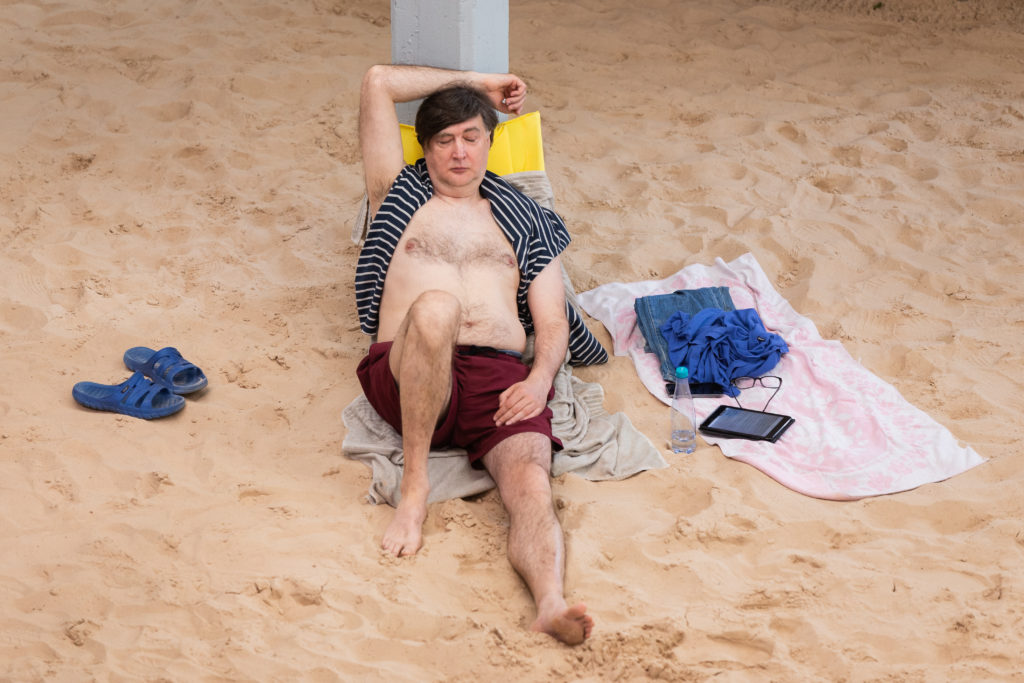
Sun & Sea (Marina) opera performance by Rugile Barzdziukaite, Vaiva Grainyte, and Lina Lapelyte at Biennale Arte Venice (2019). © Andrej Vasilenko
How do you approach such a hugely devastating topic in a way that is not overwhelming or completely crushing, as you did with the work in Venice, Sun & Sea (Marina)?
The environment is tied up with questions around poverty, commodification, and capitalism—it’s so complex that one tends to feel quite powerless. There’s a strong emphasis within climate change discourse on individual responsibility, saying that we are all implicated and that we are all responsible, and that we all need to recycle more, waste less, buy less.
When you leave it on the level of these imperatives, I think there is a small punk inside all of us who thinks, “so long as I am not seen, I will do what I want in secret.” So, when do you decide not to buy the plastic bottle because you really feel something in a completely self-generated way?
The more I spend time with the practice of ecological thinking, the more I realize that one solution or a one-toned approach is just not the answer. I am driven by the fact that it is becoming quite clear now that we are a little bit past the point of any sort of realistic reversal of the effects of climate disaster. Because of that, I am attached to the idea that you need pluralistic voices. I think there is something very dangerous in continuing to say that we all should consume less, because we exist in paradigms that are made for consumption. There is a lot that the individual cannot do at this moment. And there is a tendency—particularly in this field—to be product-driven and to present a prototype as a solution. There is usually an object or a building at the end of it.
I have been asked before if our approach for the Lithuanian Pavilion was better or worse than, say, something more activist, but I don’t think in that way at all. I am incredibly supportive of ecological activism that raises alarm in different ways, but I feel we need different ways of approaching the subject, because people will come on board for different reasons. My own personal way of feeling truly connected with the ecological has been through the mythological, the poetic, and the affective.
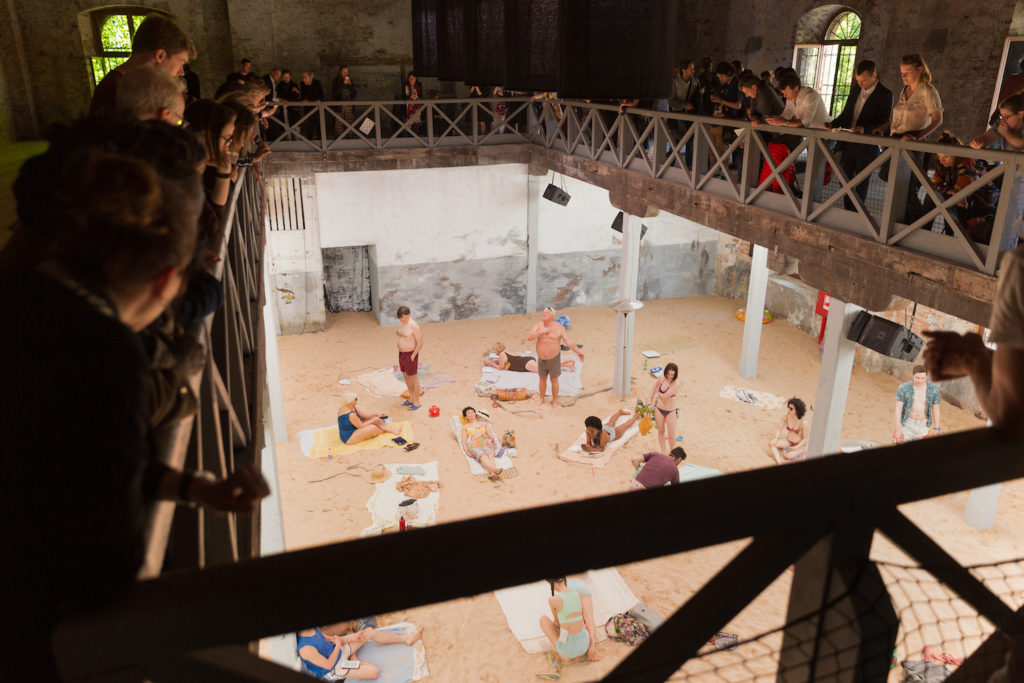
Sun & Sea (Marina) opera performance by Rugile Barzdziukaite, Vaiva Grainyte, and Lina Lapelyte at Biennale Arte Venice (2019). © Andrej Vasilenko
What did you make of the intense reactions toward the exhibition?
I witnessed audience members queuing for hours, arguing because they had to get to meetings or had a train to catch. These moments are quite pressurized for the professional art field, when everyone wants to do the in-and-out thing. But often visitors would finally enter and stay for much longer than intended. Then they would come out, many of them, in some degree along the spectrum of devastation.
I was joking at the time, “I think the art world is having a nervous breakdown.” But there is clearly something stuck at the back of people’s throats and it’s frightening to have it come out. So, the smallest gesture—a bit of song, a slightly different angle, a couple of children and dogs on the beach—can just release it and, before you know it, you’re crying. The fact that, in Venice, this could happen on a collective scale made us all feel quite connected to our audience.
Critics might say that it’s entertainment: You’ve cried at the Lithuanian Pavilion and then you go back to your own life. But I feel like the accretion of these moments does engender the possibility for thinking differently in relation to the environment.
The imperative to consider our relationship with the environment has gone from being a relatively background issue to now, finally, appearing constantly in headlines. Do you think this same urgency has also arrived in the art world?
I hope so. My great hope would be for every art institution to have an ecology department. It does not necessarily have to be someone like me who talks about plants, but it should be someone who looks at institutional strategy and environment at the same time, at how this institution relates to others, and how it sits within its urban landscape.
For me, an institution that works in a very embedded way, that thinks about the land it is sitting on, is an ecological institution. I hope that institutions become less hierarchical, more collaborative, and inter-organizational—those are forms of environmental thinking.
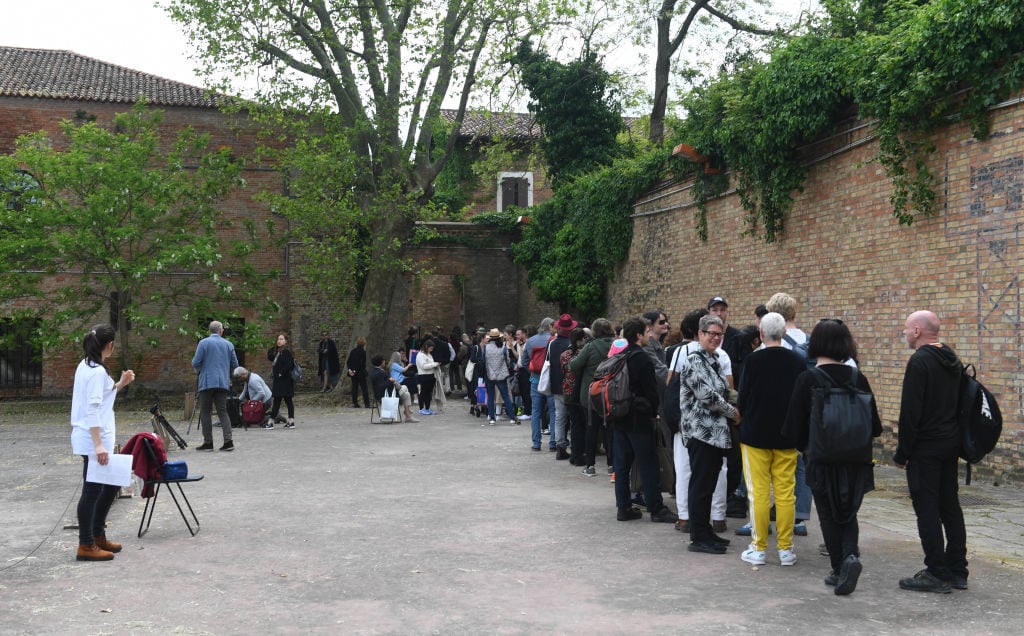
A crowd stands in front of the Lithuanian Pavilion. Photo: Felix Hörhager/dpa/picture alliance via Getty Images.
Most of the institutions we may be talking about were established in the 19th or 20th centuries. How do we move beyond the traditional structure?
Any institution is made up of people, and trees! I am walking around our centennial tree as I am talking to you.
There is a necessity to open up the disciplines so that we can face giant considerations like climate change. If departments do not collaborate, then everyone is just seeing things through a small keyhole. What would it mean to operate an institution as a permaculture, and less like a monoculture? I am really obsessed with the fact that metaphors are real and that you can move between the metaphoric and the literal in your program. When you do that, that’s when you start to see things differently.
Just the fact that departments are working separately means that resources are wasted, because, for example, one department is bringing chairs in for an event one day and another is doing the same the next day. If we don’t collaborate, it’s four trucks instead of two, and so on.
We know the history of museums is tied up with the history of colonialism. Museum structures formed during industrialization—what was, ultimately, a time of pollution. When you start to dissolve these silos of colonialism and industrialization, it might have beneficial effects on questions of de-colonialization or the environment.
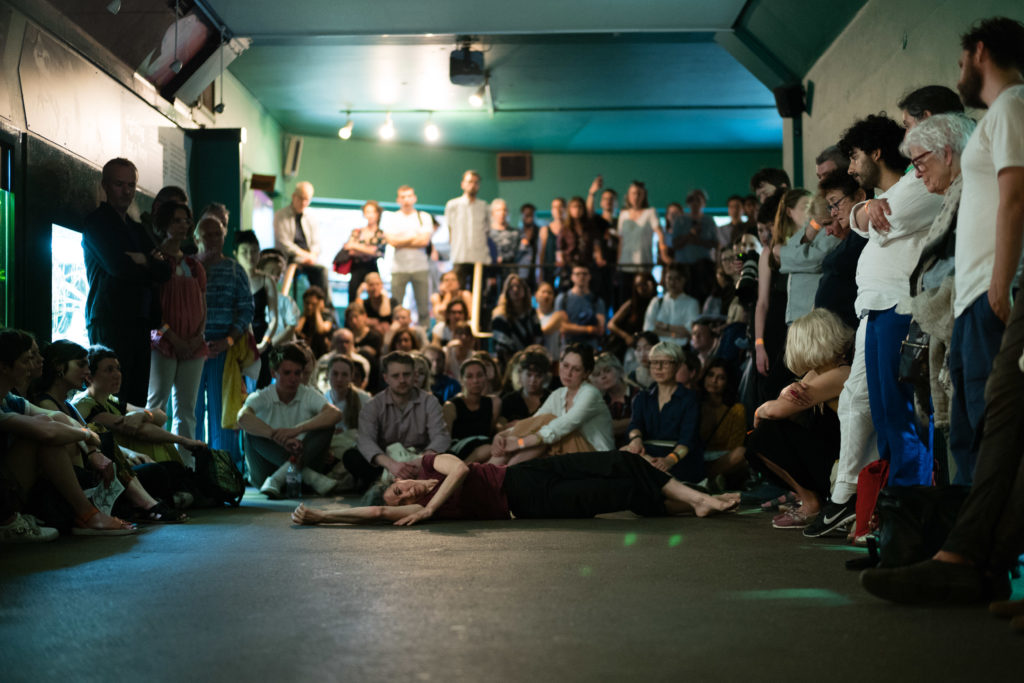
Claire Filmon performing Simone Forti’s Sleep Walkers / Zoo Mantras at the Serpentine Galleries General Ecology festival, “The Shape of a Circle in the Mind of a Fish, part 1: Language,” curated by Lucia Pietroiusti and Filipa Ramos, ZSL London Zoo. Photo: Plastiques Photography.
“General Ecology” must be the first of its kind in a contemporary arts institution. How did the program come into being?
The project was developed over about a year after I came back from maternity leave. For me, the experience of maternity was very intellectual, rather than physical or emotional. You learn so much about non-verbal communication and about interspecies communication. It gives you so much to think about in terms of the child’s lifetime, and therefore the notion of time in a more abstract sense.
I was previously curator of live programs at the Serpentine, so I began rerouting my small budget towards ecological events. The response from the public was such that the Serpentine embraced the program officially. At that time, I insisted that we really needed a curator of ecology—it didn’t necessarily need to be me—but someone who could quickly show that the gallery had this serious commitment. That person would need enough agency to speak about the institution’s intentions in earnest. After this, I became involved in exhibitions, like the ones that are happening for our 50th anniversary next year, which will all have some kind of ecological focus.
We are doing, for example, an exhibition of the [Italian] design duo Formafantasma, who are thinking about deploying design strategies that cross over to the policymaking field. Our live programs in the spring will address very specific topics, like mushrooms, decay, and death.
The ecology project was really developed as a project that would address environmental questions through borrowing images and methodologies from the environment. I was aiming to infect everything at the institution with an ecological bug—I wanted it to work like a mushroom.
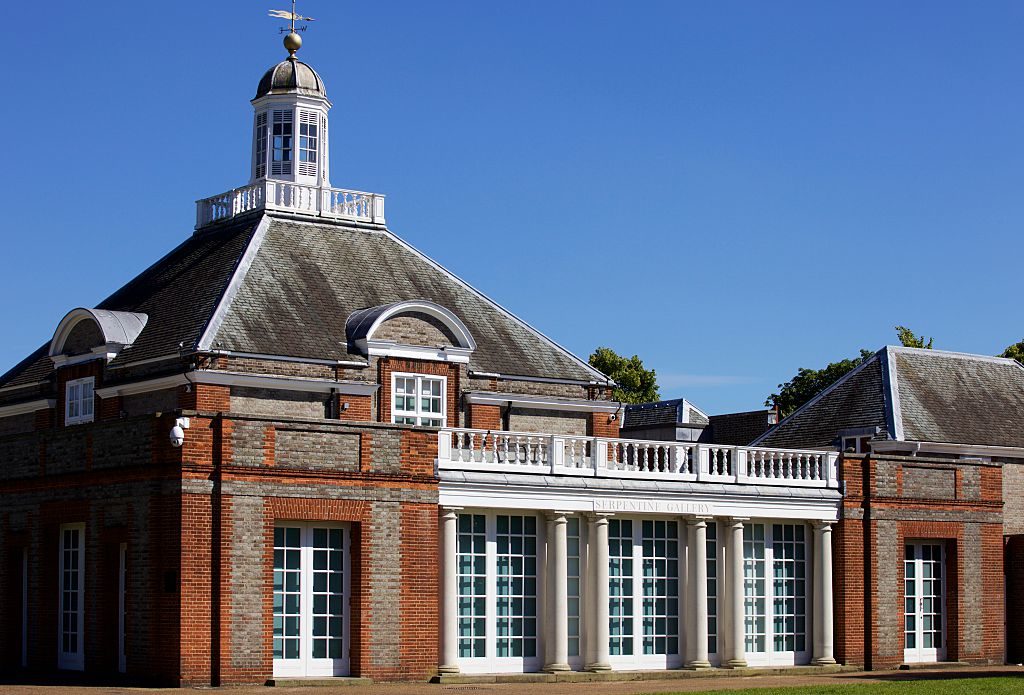
The Serpentine Gallery, Kensington Gardens, England. (Photo by: Loop Images/Universal Images Group via Getty Images)
It certainly has mushroomed. Next year, the Serpentine is dedicating the entire program in 2020 to ecological topics. How did you arrive at the idea?
Hans Ulrich Obrist, our artistic director, had worked with [the late German artist and political activist] Gustav Metzger on the “Extinction Marathon” at the Serpentine in 2014; Metzger really was committed to how art could combat species extinction and his words continue to resonate with Hans Ulrich.
So moments like that amid the current zeitgeist of this climate awakening coagulated right at the time when we were thinking about what to do for our 50th anniversary next year. It became quite evident that it didn’t make sense to spend our anniversary celebrating the past. We wanted to instead do an anniversary year that would be future-focused. So it became very clear to us that we should celebrate ecology and explore the extinction of species, but also gestures, customs, languages, and so on.
What are some of the first steps involved in something so ambitious?
At the moment we are doing the big task of auditing ourselves. Once you decide to do something like this on a curatorial level, you have an obligation to address your own relationship to the environment as an institution. So now we are working with the foundation Julie’s Bicycle and we pledged to reduce our carbon emissions.
We are really aiming to use the next five or six months to give thought to what we do, how we do it, how much we produce, whether to produce differently, whether to collaborate more internally, how to reduce resource expenditure, and so on. Travel and materials are the two most evident points to consider. It doesn’t make sense, for example, to have an event where 100 people fly over [to London].
When your audience starts to ask you questions—about, say, your carbon footprint—that’s when we tend to shy away from addressing the topic. But if you stop seeing it as a critique and start to see it as an invitation and a way to be helped, then it becomes a real collaboration with your audience.
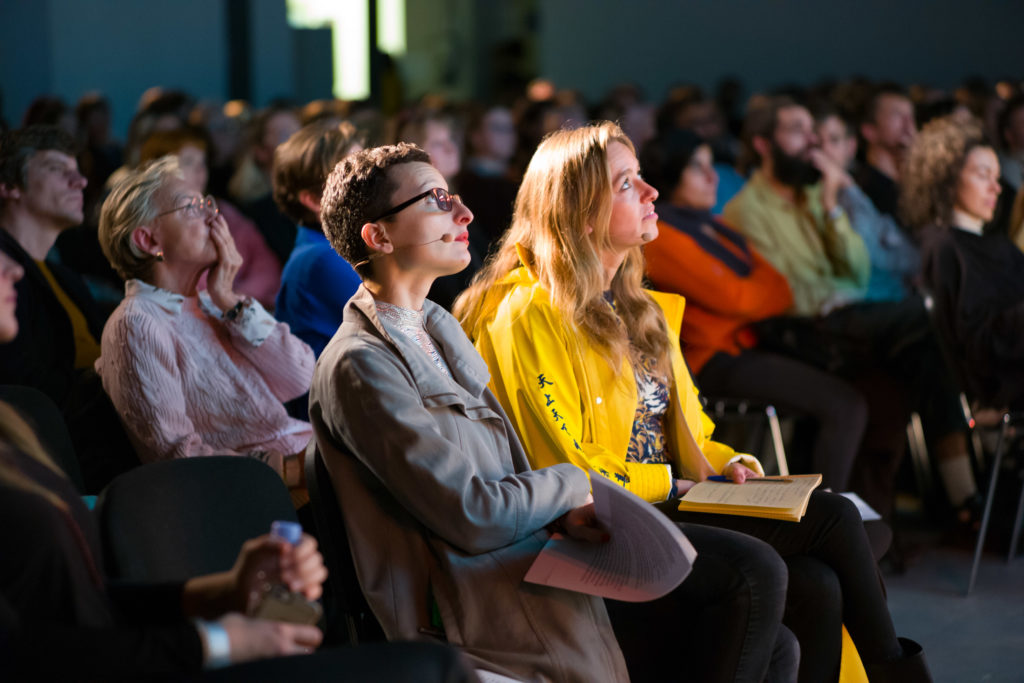
Lucia Pietroiusti and Filipa Ramos at the Serpentine Galleries General Ecology festival, “The Shape of a Circle in the Mind of a Fish: we have never been one,” curated by Lucia Pietroiusti and Filipa Ramos, Ambika P3, London, Photo: Plastiques Photography.
How does one “infect” places beyond institutions—like, say, art fairs?
Art fairs are not completely futile. When I was at Art Basel this year, there was a question at the end of our panel [about climate change and the art world] asking what the point of it was. My instinctive reaction at the time was to say, “If there is anyone here who has any money or power, you’ve heard the message. Now, go off and do it.”
I feel like this is important: The context of an art fair can become strategic. I’ve been in an art institution for most of my professional life, and I am a firm believer in doing things from the inside. As cultural producers, we have a lot more agency than we may realize. One of those agencies is to be quite close to people who are very close to decision-making power on a grander scale.
And, after all, you and I are talking now because we met in Basel, aren’t we? This is an effect of the fair.
Where does the ecological intersect with the way in which institutions need to engender considerations of class, gender, race, and representation?
I feel we need a different approach to ecological questions and questions around representation. The issue of representation has a strong infrastructural component due to the identity of the workers in the institution. Unfortunately, a tree is never going to be a curator, and so we need to address the ecological somewhere else in the infrastructure, in terms of, say, greening institutions themselves.
And while it’s easy to change your program, it takes more than that to become less representative of one kind of experience: the global north, male, white, and straight experience. Unless you keep in mind that the infrastructure itself needs to change in relation to those aspects, then you risk it being just a “moment.”
The effects of climate change are unequally distributed on a planetary scale; the climate targets are established on the notion of that global north being protected from climate disaster. It’s not for me to be the representative of this conversation. To consider these representational and ecological concerns in tandem is where the real challenge begins.